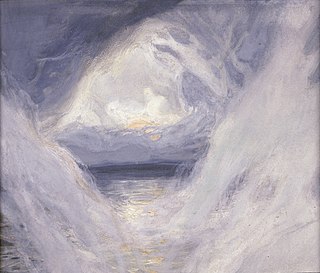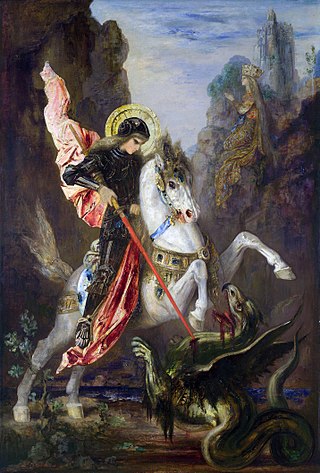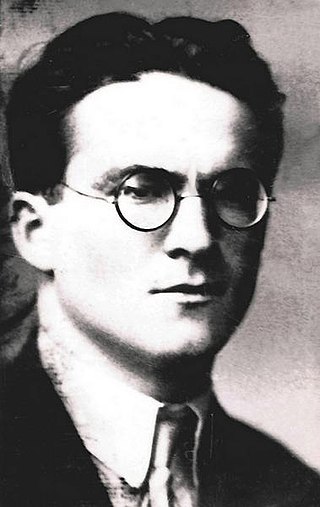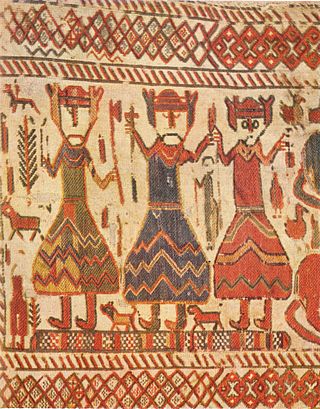Motifs
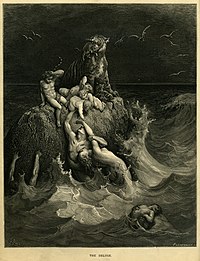
Creation of the earthly realm
A creation myth (or cosmogonic myth) is a symbolic narrative of how the world began and how people first came to inhabit it. While in popular usage the term myth often refers to false or fanciful stories, members of cultures often ascribe varying degrees of truth to their creation myths. In the society in which it is told, a creation myth is usually regarded as conveying profound truths – metaphorically, symbolically, historically, or literally. They are commonly, although not always, considered cosmogonical myths – that is, they describe the ordering of the cosmos from a state of chaos or amorphousness.
Creation myths often share a number of features. They often are considered sacred accounts and can be found in nearly all known religious traditions. They are all stories with a plot and characters who are either deities, human-like figures, or animals, who often speak and transform easily. They are often set in a dim and nonspecific past that historian of religion Mircea Eliade termed in illo tempore ('at that time'). Creation myths address questions deeply meaningful to the society that shares them, revealing their central worldview and the framework for the self-identity of the culture and individual in a universal context.
Creation myths develop in oral traditions and therefore typically have multiple versions; found throughout human culture, they are the most common form of myth.
Primordial Chaos
Chaos (Ancient Greek: χάος, romanized: kháos) (aka Primordial Chaos, Primordial Void) is the mythological void state preceding the creation of the universe (the cosmos) in Greek creation myths. In Christian theology, the same term is used to refer to the gap or the abyss created by the separation of heaven and earth. In Norse mythology, Ginnungagap (old Norse: [ˈɡinːoŋɡɑˌɡɑp]; "gaping abyss", "yawning void") is the primordial void mentioned in the Gylfaginning, the Eddaic text recording Norse cosmogony.
Creation of mankind from clay
The creation of man from clay is a theme that recurs throughout numerous world religions and mythologies.
In the Epic of Gilgamesh, Enkidu is created by the goddess Aruru out of clay. In Greek mythology, Prometheus molded men out of water and earth. Per the Hebrew Bible, (Genesis 2:7) "And the Lord God formed man of the dust of the ground, and breathed into his nostrils the breath of life; and man became a living soul". In Hindu mythology, the mother of Ganesh, Parvati, made Ganesh from her skin. In Chinese mythology (see Chu Ci and Imperial Readings of the Taiping Era), Nüwa molded figures from the yellow earth, giving them life and the ability to bear children.
First Humans
A protoplast, from ancient Greek πρωτόπλαστος (prōtóplastos, "first-formed"), in a religious context initially referred to the first human or, more generally, to the first organized body of progenitors of mankind in a creation myth.
Numerous examples exist throughout history of a human couple being the progenitors of the entire human species. This would include, but not limited to Adam and Eve of Abrahamism, Ask and Embla of Norse mythology, and Fuxi and Nüwa from Chinese mythos.
In Hindu mythology, Manu refers to the archetypal man. In Sanskrit the term for 'human', मानव (IAST: mānava) means 'of Manu' or 'children of Manu'. The Manusmriti is an ancient legal text and constitution among the many Dharmaśāstras of Hinduism and is believed to be a discourse given by Manu.
Acquisition of fire for the benefit of humanity
The theft of fire for the benefit of humanity is a theme that recurs in many world mythologies. A few examples include: in Greek mythology, according to Hesiod, the Titan Prometheus steals the heavenly fire for humanity, enabling the progress of civilization. In the Book of Enoch, the fallen angels and Azazel teach early humanity use of tools and fire. Per the ancient Indian collection of Vedic Sanskrit hymns, the Rigveda (3:9.5), speaks of a hero Mātariśvan who recovered fire which had been hidden from humanity.
Flood myth
Cultures around the world tell stories about a great flood. [14] In many cases, the flood leaves only one survivor or group of survivors. For example, both the Babylonian Epic of Gilgamesh and the Hebrew Bible tell of a global flood that wiped out humanity and of a man who saved the Earth's species by taking them aboard a boat. [15] Similar stories of a single flood survivor appear in Hindu mythology where Manu saves the Earth from the deluge by building an ark [16] as well as Greek, Norse mythology, Inca mythology and Aztec mythology. [17] The flood narratives, spanning across different traditions such as Mesopotamian, Hebrew, Islamic, and Hindu, reveal striking similarities in their core elements, including divine warnings, ark construction, and the preservation of righteousness, highlighting the universal themes that thread through diverse religious beliefs. [18]
Dying god

Many myths feature a god who dies and who often returns to life. [19] Such myths are particularly common in Near Eastern mythologies. [20] The anthropologist Sir James Frazer compared these dying god myths in his multi-volume work The Golden Bough . The Egyptian god Osiris and the Mesopotamian god Tammuz are examples of the dying god, while the Greek myths of Adonis (though a mortal) has often been compared to Osiris and the myths of Zagreus and Dionysos also feature both death and rebirth. [21] Some scholars have noted similarities between polytheistic stories of dying gods and the Christian story of Jesus of Nazareth. [22]
Creative sacrifice
Many cultures have stories about divine figures whose death creates an essential part of reality. [23] [24] These myths seem especially common among cultures that grow crops, particularly tubers. [25] One such myth from the Wemale people of Seram Island, Indonesia, tells of a miraculously conceived girl named Hainuwele, whose murdered corpse sprouts into the people's staple food crops. [26] The Chinese myth of Pangu, [27] the Indian Vedic myth of Purusha, [28] and the Norse myth of Ymir all tell of a cosmic giant who is killed to create the world. [23]
Axis mundi
Many mythological beliefs mention a place that sits at the center of the world and acts as a point of contact between different levels of the universe. [29] This axis mundi is often marked by a sacred tree or other mythical object. For example, many myths describe a great tree or pillar joining heaven, earth, and the underworld. [30] Vedic India, ancient China, Mayans, Incas and the Germanic peoples all had myths featuring a Cosmic Tree whose branches reach heaven and whose roots reach hell. [31] The ancient Greeks believed in the centre of the universe - Delphi, where a prophetic oracle lived. The story goes that Zeus, king of gods released two birds in opposite directions to fly around the world. The place they met was Delphi.
Deus otiosus
Many cultures believe in a celestial supreme being who has cut off contact with humanity. Historian Mircea Eliade calls this supreme being a deus otiosus (an "idle god"), [32] although this term is also used more broadly, to refer to any god who does not interact regularly with humans. In many myths, the Supreme Being withdraws into the heavens after the creation of the world. [33] Baluba mythology features such a story, in which the supreme god withdraws from the earth, leaving man to search for him. [34] Similarly, the mythology of the Hereros tells of a sky god who has abandoned mankind to lesser divinities. [35] In the mythologies of highly complex cultures, the supreme being tends to disappear completely, replaced by a strong polytheistic belief system. [36] In Greek mythology, "Chaos", the creator of the universe, disappears after creating primordial deities such as Gaea (Earth), Uranus (Sky), Pontus (Water) and Tartarus (Hell), among others.
Titanomachy

Many cultures have a creation myth in which a group of younger, more civilized gods conquers and/or struggles against a group of older gods. In Hindu mythology, the younger devas (gods) battle the older asuras (demons). [37] In the Greek myth of the Titanomachy, the Olympian gods defeat the Titans, an older and more primitive divine race, and establish cosmic order. [37] [38]
Giants
Associated with many mythological hero stories, giants (from Latin and Ancient Greek: gigas, cognate Gaia/Gaea) are beings of human appearance, but of prodigious size and strength common in the mythology and legends of many different cultures. In various Indo-European mythologies, gigantic peoples are featured as primeval creatures associated with chaos and the wild nature, and they are frequently in conflict with the gods, be they Olympian, Celtic, Hindu or Norse. Giants also often play similar roles in the mythologies and folklore of other, non Indo-European peoples, such as in the Nartian traditions, along with the Quinametzin of Aztec mythology.
There are also accounts of giants in the Hebrew Bible. Some of these are called Nephilim, a word often translated as giant although this translation is not universally accepted. They include Og King of Bashan, the Nephilim, the Anakim, and the giants of Egypt mentioned in 1 Chronicles 11:23. The first mention of the Nephilim is found in Genesis 6:4; attributed to them are extraordinary strength and physical proportions.
Dragons and serpents
Usually large to gigantic, serpent-like legendary creatures that appear in the folklore of many cultures around the world. Beliefs about dragons vary drastically by region, but dragons in western cultures since the High Middle Ages have often been depicted as winged, horned, four-legged, and capable of breathing fire, whereas dragons in eastern cultures are usually depicted as wingless, four-legged, serpentine creatures with above-average intelligence.
Chaoskampf
| Part of a Mythology series on |
| Chaoskampf or Drachenkampf |
|---|
 |
| Comparative mythology of sea serpents, dragons and dragonslayers. |
One on one epic battles between these beasts are noted throughout many cultures. Typically they consist of a hero or god battling a single to polycephalic dragon. The motif of Chaoskampf (German: [ˈkaːɔsˌkampf] ; lit. 'struggle against chaos') is ubiquitous in myth and legend, depicting a battle of a culture hero deity with a chaos monster, often in the shape of a sea serpent or dragon. A few notable examples include: Zeus vs. Typhon and Hercules vs. the Lernaean Hydra, both of which are from Greek mythology, Thor vs. Jörmungandr of Norse mythology, Indra vs. Vritra of Indian mythology, Ra vs. Apep of Egyptian mythology, Yahweh vs. Leviathan of Judeo-Christian mythology, and Yu the Great vs. Xiangliu. Many other examples exist worldwide.
Ouroboros
Originating in ancient Egyptian iconography, the Ouroboros or uroborus is an ancient symbol depicting a serpent or dragon eating its own tail. The Ouroboros entered western tradition via Greek magical tradition.
In Norse mythology, the Ouroboros appears as the serpent Jörmungandr, one of the three children of Loki and Angrboda, which grew so large that it could encircle the world and grasp its tail in its teeth.
In the Aitareya Brahmana, a Vedic text of the early 1st millennium BCE, the nature of the Vedic rituals is compared to "a snake biting its own tail."
It is a common belief among indigenous people of the tropical lowlands of South America that waters at the edge of the world-disc are encircled by a snake, often an anaconda, biting its own tail.
Founding myths
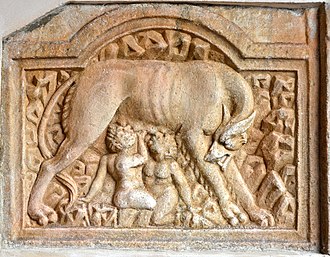
Many cultures have myths describing the origin of their customs, rituals, and identity. In fact, ancient and traditional societies have often justified their customs by claiming that their gods or mythical heroes established those customs. [39] [40] For example, according to the myths of the Australian Karajarri, the mythical Bagadjimbiri brothers established all of the Karadjeri's customs, including the position in which they stand while urinating. [41] In the Old Testament, the Israelites have a founding myth of their ancestors escaping enslavement from Egypt.
Structure of hero narratives
Folklorists such as Antti Aarne (Aarne-Thompson classification systems), Joseph Campbell (monomyth) and Georges Polti (The Thirty-Six Dramatic Situations) have created structured reference systems to identify connections between myths from different cultures and regions. Some comparative mythologists look for similarities only among hero stories within a specific geographical or ethnic range. For example, the Austrian scholar Johann Georg von Hahn tried to identify a common structure underlying Aryan hero stories. [42]
Human cannibalism
Human cannibalism features in the myths, folklore, and legends of many cultures and is most often attributed to evil characters or as extreme retribution for some wrongdoing. Examples include Lamia of Greek mythology, a woman who became a child-eating monster after her children were destroyed by Hera, upon learning of her husband Zeus' trysts. In Zuni mythology and religion, Átahsaia is a giant cannibalistic demon, feeding on fellow demons and humans alike. He is depicted as having unblinking bulging eyes, long talons, and yellow tusks that protruded past his lips. The myth of Baxbaxwalanuksiwe, in Hamatsa society of the Kwakwaka'wakw indigenous tribe, tells of a man-eating giant, who lives in a strange house with red smoke emanating from its roof.
Astrological traditions, types, and systems
Most human civilizations - India, China, Egypt, Mesopotamia, Maya, and Inca, among others - based their culture on complex systems of astrology, which provided a link between the cosmos with the conditions and events on earth. For these, the astrological practice was not mere divination because it also served as the foundation for their spiritual culture and knowledge-systems used for practical purposes such as the calendar (see Mesoamerican calendric shamans) and medicine (e.g. I Ching).
Closely tying in with Astrology, various zodiac systems and constellations have existed since antiquity. For the zodiac, the Mazzaroth, Chinese Zodiac, and Hindu Zodiac are examples. The origins of the earliest constellations likely go back to prehistory. People used them to relate stories of their beliefs, experiences, creation, or mythology. Different cultures and countries adopted their own constellations, some of which lasted into the early 20th century before today's constellations were internationally recognized.
Orbis Alius (other earth/world)
The concept of an otherworld in historical Indo-European religion is reconstructed in comparative mythology. Its name is a calque of orbis alius (Latin for "other Earth/world"), a term used by Lucan in his description of the Celtic Otherworld.
Comparable religious, mythological or metaphysical concepts, such as a realm of supernatural beings and a realm of the dead, are found in cultures throughout the world. Spirits are thought to travel between worlds, or layers of existence in such traditions, usually along an axis such as a giant tree, a tent pole, a river, a rope or mountains. In Greek mythology, after death, people either go to Tartarus or Elysium while the Norse believed in going to either Valhalla, Folkvangr, or Helheim.
Underworld
The underworld is the supernatural world of the dead in various religious traditions and myths, located below the world of the living. Chthonic is the technical adjective for things of the underworld.
The concept of an underworld is found in almost every civilization and "may be as old as humanity itself". Common features of underworld myths are accounts of living people making journeys to the underworld, often for some heroic purpose. Other myths reinforce traditions that entrance of souls to the underworld requires a proper observation of ceremony, such as the ancient Greek story of the recently dead Patroclus haunting Achilles until his body could be properly buried for this purpose. Persons having social status were dressed and equipped in order to better navigate the underworld.
Plane (esotericism)
In esoteric cosmology, a plane is conceived as a subtle state, level, or region of reality, each plane corresponding to some type, kind, or category of being. Also known as a plane or realm of existence.
The concept may be found in religious and esoteric teachings—e.g. Vedanta (Advaita Vedanta), Ayyavazhi, shamanism, Hermeticism, Neoplatonism, Gnosticism, Kashmir Shaivism, Sant Mat/Surat Shabd Yoga, Sufism, Druze, Kabbalah, Theosophy, Anthroposophy, Rosicrucianism (Esoteric Christian), Eckankar, Ascended Master Teachings, etc.—which propound the idea of a whole series of subtle planes or worlds or dimensions which, from a center, interpenetrate themselves and the physical planet in which we live, the solar systems, and all the physical structures of the universe. This interpenetration of planes culminates in the universe itself as a physical structured, dynamic and evolutive expression emanated through a series of steadily denser stages, becoming progressively more material and embodied.
Norse cosmology encompasses concepts from Norse mythology, such as notions of time and space, cosmogony, personifications, anthropogeny, and eschatology. Topics include Yggdrasil, an immense and central sacred tree along with the nine worlds, including Asgard, and Midgard.
The happy hunting ground is a concept of the afterlife associated with Native Americans in the United States. [1] The phrase possibly originated with Anglo-Saxon settlers interpretation of their respective description.
Afterlife (including Reincarnation)
In numerous mythologies and religions, and thus tying within the Orbis Alius motif proper is the concept of an afterlife, wherein a purported existence by which the essential part of an individual's identity or their stream of consciousness continues to live after the death of their physical body.
End of The World
Many myths mention an "End of the world (civilization)" event, wherein a final battle between good and evil takes place to create a new world, and/or a total cataclysmic event will usher an end to humanity (see Extinction event, aka ELE). Ragnarök shows the end of the world in Norse mythology. In Hindu mythology, the end of the Kali yug predicts the end of the world when the final avatar of Vishnu comes to cleanse the Earth. Armageddon, the site of the final battle as accorded by the Book of Revelation.
The 2012 phenomenon was a range of eschatological beliefs that cataclysmic or transformative events would occur on or around 21 December 2012, pursuant to the end-date of a 5,126-year-long cycle in the Mesoamerican Long Count calendar (aka Mayan calendar).
